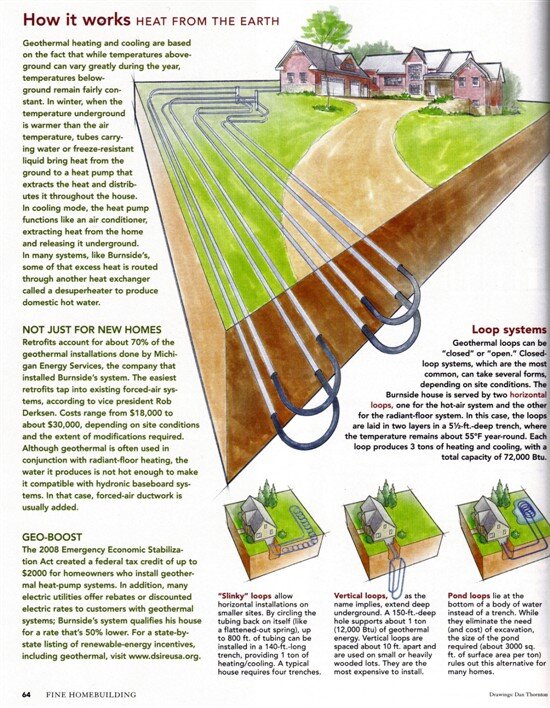How Geothermal Heating Works
We had a great feature article in Fine Home Building a few years back - and in it, Geothermal heating was discussed in detail.
You can read the entire article here (be sure to click on the PDF link at the top of the page for graphics and details) and learn more below:
How it works: Heat from the earth
Geothermal heating and cooling are based on the fact that while temperatures above-ground can vary greatly during the year, temperatures belowground remain fairly constant. In winter, when the temperature underground is warmer than the air temperature, tubes carrying water or freeze-resistant liquid bring heat from the ground to a heat pump that extracts the heat and distributes it throughout the house. In cooling mode, the heat pump functions like an air conditioner, extracting heat from the home and releasing it underground. In many systems, like Burnside’s, some of that excess heat is routed through another heat exchanger called a desuperheater to produce domestic hot water.
Not Just for New Homes
Retrofits account for about 70% of the geothermal installations done by Michigan Energy Services, the company that installed Burnside’s system. The easiest retrofits tap into existing forced-air systems, according to vice president Rob Derksen. Costs range from $18,000 to about $30,000, depending on site conditions and the extent of modifications required. Although geothermal is often used in conjunction with radiant-floor heating, the water it produces is not hot enough to make it compatible with hydronic baseboard systems. In that case, forced-air ductwork is usually added.
Have questions or want to know more? Contact us for a quick and informative reply!

